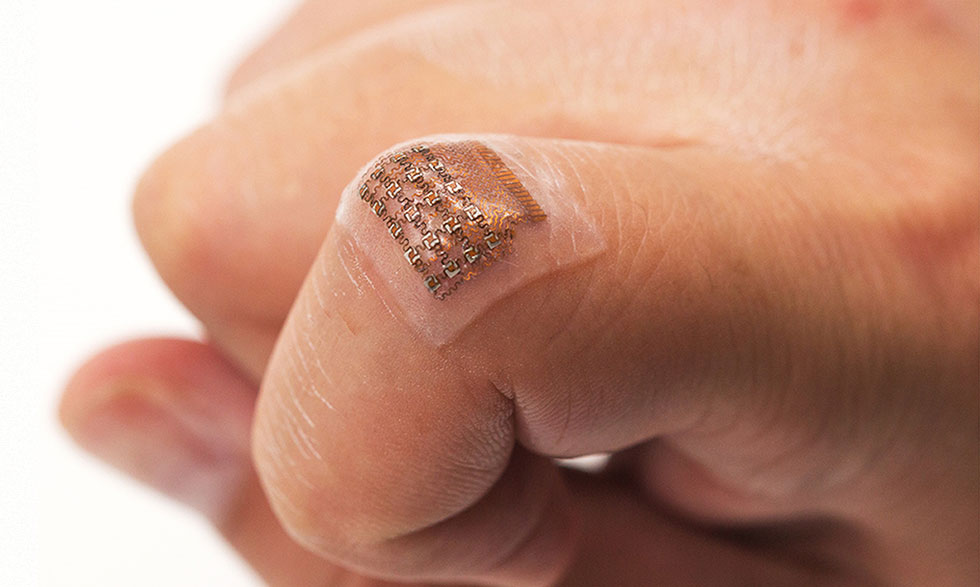
More and more consumers are using health monitors they can wear.
These wearables make it easier for patients to track their own health on a daily basis and stay motivated.
Soon, blood pressure may be something patients can track with wearables 24/7. NIH-supported researchers are testing a new wearable that can monitor a patient’s blood pressure with a small, wearable skin patch.
The patch monitors a patient’s blood pressure more accurately than other methods, like an inflatable cuff around the arm. This is because it’s able to record blood pressure in the central arteries and veins, which are located in our necks.
The patch’s ultrasound waves monitor subtle, real-time changes in the shape and size of pulsing blood vessels. These changes indicate when pressure rises and drops.
The sensor can monitor pulses more than an inch beneath the skin. That’s deeper than previous patches and other skin sensors.
NIH Director Francis H. Collins, M.D., Ph.D., said the new technology shows great promise. “So far, the new device appears to function better than any commercially available, noninvasive device for measuring central blood pressure,” he wrote in his blog.
Currently, the patch needs to be connected to wires to monitor central blood pressure, but the researchers hope to develop a wireless version.
“The hope is that one day soon their device will offer round-the-clock monitoring of central blood pressure. That could utterly transform our management of hypertension,” Dr. Collins added.
